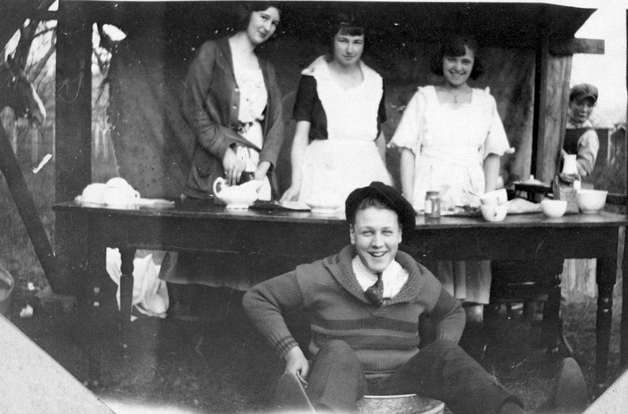Longtime Sumner residents are well familiar with the town’s 150-plus year history — if not in detail, then through family and word-of-mouth passage. But the story of the Rhubarb Pie Capital will soon be widely available in print, chronicled in an upcoming installment of Arcadia Publishing‘s “Images of America” series. And anyone with a photo from bygone days is invited to contribute.
The city government’s communication director, Carmen Palmer, has been tasked with compiling the old photographs — and the stories behind them — before they move on to Arcadia.
“What’s really fun is hearing the stories of different people in Sumner,” Palmer said. “Their family stories, together, of course, make up Sumner’s story.
“While it’s fun to see the changing styles and buildings, the really striking thing is what has not changed. There’s still a train station in the same place even though the trains are now Sounders instead of steam. And in 1922, Sumner High School students were pasting pictures in their yearbook instead of posting them on Facebook. But they still were joking with their friends and dreaming about their futures.”
That fact is plain in photographs like the one taken from Lucille Merritt’s Class of 1922 yearbook for Sumner High School. Pacific Northwest novelist Chuck Palahniuk once wrote that old pictures are a showcase of faces that have disappeared from subsequent generations. Merritt’s photo is the counterpoint to that statement. Look past the black-and-white and the attire, not to mention the horse, and you’ll discover the same usual suspects as today: the demure girl, the serious girl, the chipper girl, the class clown mugging from his unconventional seat inside a barrel. There’s even an early example of “photo bombing” by a boy off in the background. The sets and costumes may have changed, but the actors are the same.
Another photo, submitted by Robert Bernard, depicts 142nd Avenue farmer George Barnum Sr. with his infant namesake son. George Sr. had put World War I behind him four years prior. George Jr. was more than two decades away from service in World War II and imprisonment in a German POW camp. But in that moment he was just a care-free babe in his father’s arm, fascinated by the curvature of the small jar held in front of him. Both men made their homes and livings in Sumner. George Jr. passed away last year, having lived into his 90s.
Downtown Main Street looked remarkably different in a photo submitted by Hammermaster Law Offices. Every car a thin-wheeled buggy on a laneless road, every man and boy in a dapper cap. A single tree in the background towered over all, its thick leafy growth extending more than halfway over the road. But most of the buildings still stand today.
Perhaps the most significant thing to come out of the photo collection process has been the rediscovery of places once thought to be lost from the record.
“We finally have a picture of Sumner’s train station from the 1900s,” Palmer said.
Every book in the “Images of America” local history series features more than 200 photos — so there is still a need for submitted materials, and a chance to contribute to local recorded history.
Photos can be left at City Hall, on 1104 Maple St., by care of Palmer.



